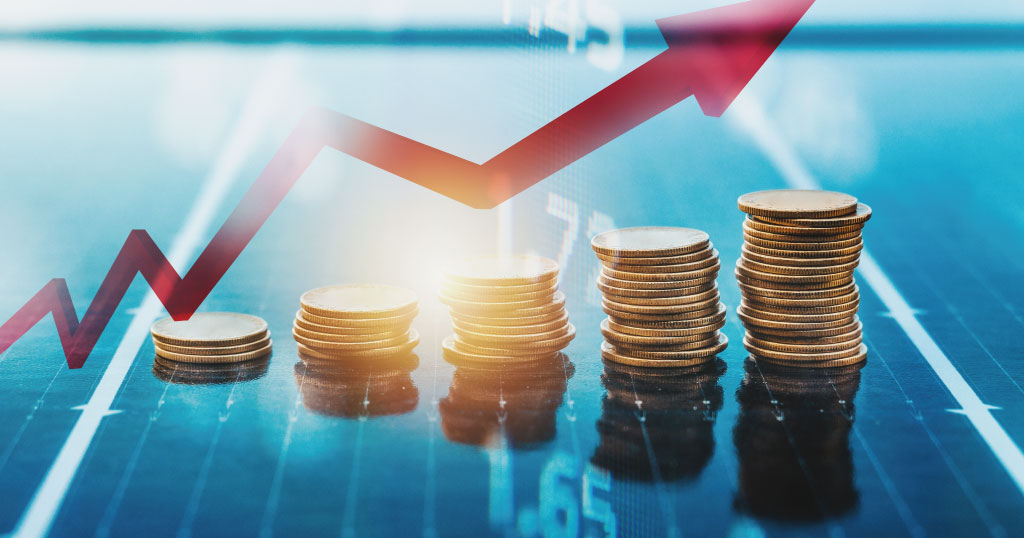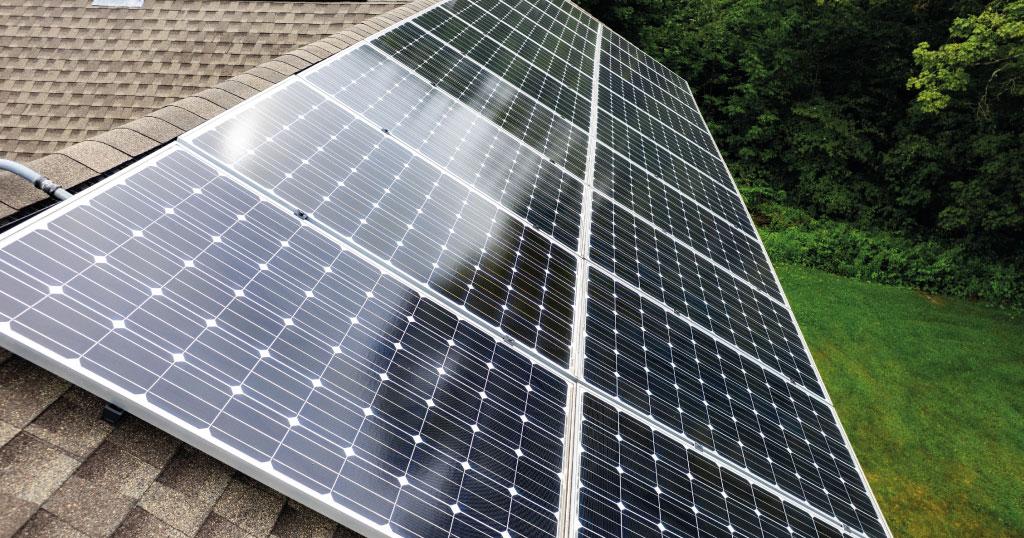You might be looking at everything happening in the United States Solar industry and think, “Should I invest in solar before the tax credit goes away?”
You’re not alone. Residential solar installations are spiking right now!
EnergySage, an online marketplace connecting homeowners to solar installers like us, has experienced a surge of 205%! That’s a 205% increase in homeowners seeking solar installers compared to this time last year.
Imagine if your local grocery store suddenly doubled in business. Instead of 25 other people shopping alongside you, it’s 50!
And it’s mainly because of the accelerated phase-out of the 30% solar investment tax credit. We’ve discussed how the Second Trump Administration’s policies are impacting solar in How the One Big Beautiful Bill is Shaking up the American Solar Industry and What’s happening in the solar industry? How domestic manufacturing is powering America’s future.
Just to give you a refresher: the Biden Administration incentivized solar investment through an investment tax credit (ITC) in the Inflation Reduction Act (IRA). It reduces the taxes you owe by 30% of the net installation cost.
So if you invested in a $30,000 system (which could get you around 10 kW of solar), you can reduce the amount of federal taxes you owe by $9,000. And if you owe less than $9,000, that credit can roll over for up to five years.
But now that the tax credit is being slashed at the end of this year. If you invest in solar in 2025, you can benefit from the tax credit for as long as it rolls over. However, if you invest in solar on or after January 1, 2026, you will not be eligible for the tax credit. That’s spurring a lot of anxiety and urgency in solar supporters like you.
“It’s clear that homeowners are rushing to take advantage of this tax credit before it goes away. The urgency to purchase and install residential solar systems before the end of the year is driving real changes in market behavior, putting pressure on installers and utilities as demand surges and timelines tighten.”
~ Josh Levine, Chief Marketing Officer of EnergySage.

Should you go solar now or later?
Honestly, as one of the best solar companies in Virginia (that’s not us bragging, that’s EnergySage recognizing us as one of the top installers in the state), we’re conflicted.
On the one hand, we want as many people as possible to enjoy the energy freedom and financial security that solar offers. Throughout our many years in business, we’ve been a part of so many freeing journeys. Over 7,000 to be exact!
Take Charles Griffin, for example. In 2023, we installed a solar system that offsets 100% of his energy needs.
“The financial benefits are incredible…It’s been a fantastic buy for me. I run my house cooler by 5° in the summer and warmer in the winter. I’ve just found that I have much more flexibility in what I can do, and I no longer have to worry about a power bill… But it’s not just about the money. It’s about knowing that I’m doing my part to help the environment. It’s a great feeling.”
~ Convert Solar Customer, Charles Griffin.
His 9.36 kW solar system is projected to save $89,270 on energy costs over its 30-year lifespan!
But on the other hand… we don’t want anyone to rush into an investment.
Ultimately, as your Local Solar Company in Virginia Beach, our job is to ensure you’re informed and confident in your decision.
Here’s the thing: we’ve been installing rooftop solar for years before the tax credit was even drafted. And we intend to continue long after it’s gone. We’ve been able to do that by making solar more affordable through solar loans. We’ll discuss solar loans and other financing options later on in this article.
Unsure whether you should go solar now or later? Here’s our advice.
You know that old saying…
“The best time to plant a tree was 20 years ago. The second best is today.”
That applies to solar. If you can go solar now, even if a solar loan is your only option, you should go solar now. As one of our past success clients proudly proclaimed, “If you can afford it, do it!”
Why you should go solar now, regardless of when you’re reading this.
Even if you’re reading this long after the tax credit has disappeared, we still think now (whenever that is for you) is much better than later.
Why? Because utility prices are only going to increase. Even if you use less electricity, you will still pay more for electricity.
You might not have noticed it, but you’re energy bill is increasing. And will only continue to do so.
If you compare your most recent electricity bill with last year’s, you’ll notice an increase in the supply charge. The supply charge is the actual cost of electricity itself, usually charged per kilowatt-hour (kWh). These charges can fluctuate based on market auctions, fuel prices, and demand trends. And they are different from delivery charges, which correspond to the cost of delivering electricity, such as infrastructure maintenance.
If you live in Virginia, you are part of the PJM interconnection energy market. It covers over 65 million Americans across 13 states, from Illinois to Washington, D.C. The average PJM residential customer experienced an increase of approximately $10 to $21 in their monthly bill. That is based on data comparing June 2025 to June 2024.
However, this varies widely based on your location. For example, in Northern Virginia, the average increase was between $15 and $37.
That may not sound like much, but it will add up in the coming years.
“When I first moved here ten years ago, my electric bill was around $129. It’s gone up to $256!”
~ Convert Solar Customer, Laura Kippes. Purchased a solar power system in February 2024.
That quote is from another satisfied client. Her 16.6 kW system is projected to save her over $117,000 over its 30-year lifespan.

There are two major reasons electricity prices are increasing.
Almost half (45%) of PJM’s electricity is generated by natural gas. However, the cost of natural gas has increased by 40% compared to last year. So, of course, your utility company will pass that expense off to you.
Secondly, the most recent capacity market auctions have led to record-high capacity prices. You see, PJM is merely responsible for operating the grid, but it needs various power providers to generate the electricity. So it holds capacity market auctions.
PJM forecasts peak demand for the upcoming years, and power providers bid to fill that capacity. Once capacity is reached, all winners receive the highest accepted bid.
The reason capacity prices hit record highs is because of the Data Center Boom.
With the rise of generative AI, the need for data centers to host this technology has exploded.
“But I don’t live anywhere near a data center!” It doesn’t matter, as long as you’re on the same grid as a data center (in this case, PJM), you’re subsidizing its electricity costs.
According to Monitoring Analytics, which acts as an independent market monitor for PJM, data centers were responsible for 63% of the increase in auction prices. That translates to billions of dollars PJM intends to recuperate from ratepayers like you.
“In other words, ratepayers across PJM are paying $9.3 billion more in just one year than they would have without data centers’ electricity demand.”
~ Cathy Kunkel, Energy Consultant at the Institute for Energy Economics and Financial Analysis.
That is why we are so confident that utility prices will only increase in the near future.
Currently, data centers account for 4.4% of the nation’s total electricity demand, according to independent journalists at A More Perfect Union. That energy demand is expected to triple in the next three years!
You can combat rising utility prices by going solar.
With a rooftop solar power system, you are essentially locking in your electricity rates.
What if I can’t pay for a solar system outright?
If we all had $30,000 lying around, going solar would be a no-brainer. But most of us don’t have that kind of money. Luckily, we can make solar much more affordable through solar loans.
What is a Solar Loan? How does a Solar Loan work?
On our homepage, you’ll see that we offer $0 down, $0 out-of-pocket financing options. But what does that actually mean?
In short, we offer solar loans. They are just like personal or home improvement loans. You borrow money and repay it in monthly installments over several years, with interest.
“$0 down, $0 out-of-pocket” means it requires no initial cash investment. With a home mortgage, you usually have to pay a down payment. But a solar loan covers 100% of the project cost.

What is a solar loan’s unique advantage?
Solar is a financial asset that generates tangible value. You save a huge amount on your utility bills.
Something comparable would be a home improvement loan. An extension on your home might increase its resale value, but it’s not generating any savings.
Solar saves you money from day one and will continue to do so for over 25 years!
What about other solar financing options, such as leasing or a Power Purchase Agreement (PPA)?
Solar leases and PPAs can seem really enticing. On the surface, they may seem like more affordable options, but they will most likely leave you worse off.
Essentially, a third party owns and installs the solar system, while you simply pay for the electricity it generates. You still have solar panels on your roof, but they are not your asset.
You’re not getting the same energy freedom you would have by owning your system. You’re essentially trading one utility company for another. And because you don’t own the solar system, you cannot take advantage of the incentives.
Ready to go solar?
Only you can determine when you’re ready to go solar. So why not start with a free, no-obligation assessment? It’s a simple, risk-free analysis of your home or business. You’ll get a clear idea of your property’s solar potential.
